Basket Preview
A Guide for Professionals
The phenomena of lime leaching is a process where excess water is allowed to flow though cementitious materials, usually mortar, this water dissolves the calcium hydroxide (free lime) present in the mortar and deposits this material on the finished surface of the object being constructed, quite often the brick face.
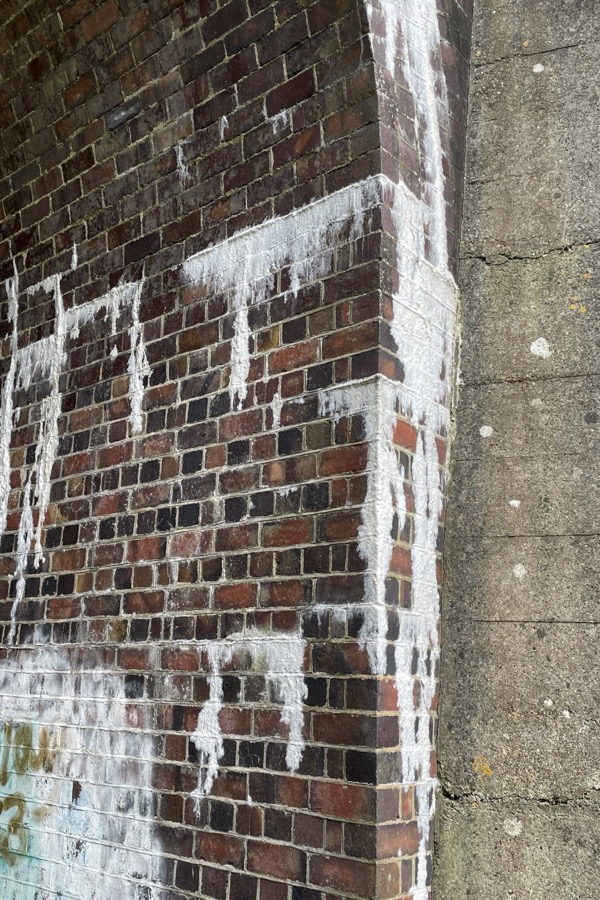
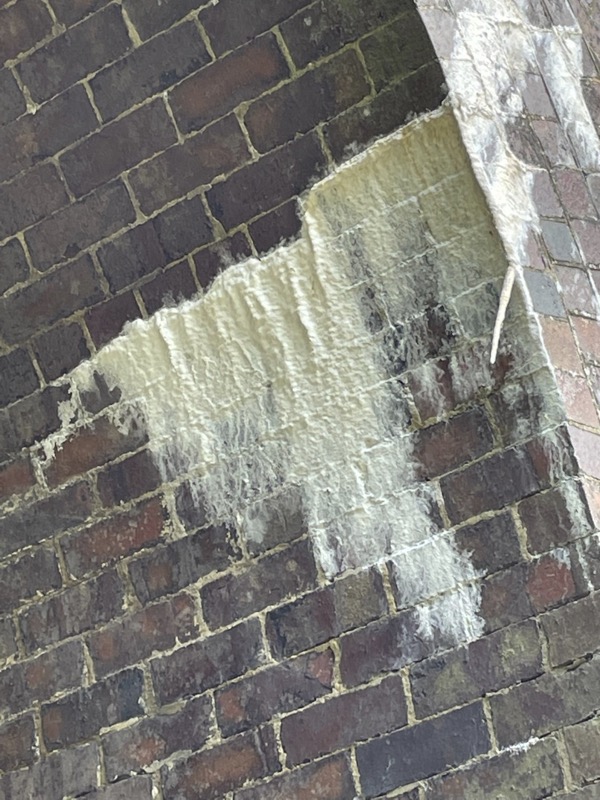
This is not to be confused with Efflorescence which are soluble salt deposits, but both can present themselves as white marks but are quite different, please see our article of Efflorescence below:
Efflorescence a Guide for Professionals
There are many examples of lime leaching in the world of landscaping and in this article I will try to cover some of the most common occurring cases and some possible solutions.
This is the most obvious cause of leaching but it's also the most common, so it worth discussing briefly. Problems with Lime Leaching can simply be due to lack of adequate protection against rainfall / inclement weather during the early stages of construction. The leaching is often seen running down from between the joints in brick and block work. This can happen if the mortar is left exposed to rainfall or if the bricks / blocks have to higher level of water content when being installed, both cases will cause similar leaching stains.
It is very important to keep all materials dry before installation especially bricks, blocks and walling used in external wall construction and cover up well if rain is expected, this will help greatly reduce if not remove these cases of Lime Leaching.
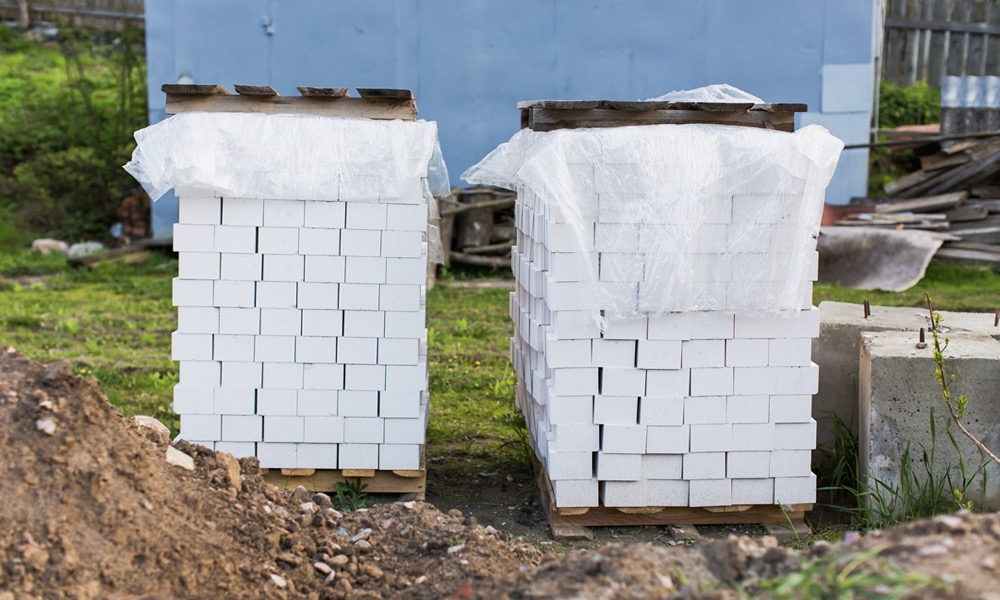
Stacks of bricks covered with plastic sheets prior to installation.
Lime leaching can be seen in different areas of retaining walls, it is generally caused by inadequate drainage and or lack of tanking behind the retaining wall. Water should not be allowed to build up behind the wall, as this will result in water penetrating the wall in numerous areas which can result in lime leaching and if the wall is clad in some natural stone materials this leaching will continue through the wall into the stone cladding, which can result in some other materials becoming leached through such as Iron, which are naturally deposited beneath the stones surface, but can sometimes be freed by this process. You can also see Lime leaching when the wall has been well tanked but a coping stone has been used to cap the wall but not been sealed after, when the water level is sufficient enough in the retained soil, it will seep through the un-sealed mortar under the coping stones, eventually bringing unsightly lime deposits to the front of the wall, which in some case can run down the surface of the wall creating white drip marks.
With all retaining walls you need to ensure that the wall is complete water prof with either tanking paint or membranes, you must also ensure that there is sufficient drainage behind the wall that allows the free flow of water away stop any possibility of water build up. A large amount of clean gravel at the base of the retaining wall and some land drainage will greatly aid drainage. In some extreme case where all of these measures have taken place and you are still experiencing lime leaching and additional drainage ditch many be need positioned a short distance behind the retaining wall to divert the excess water away from the wall, which should remove the problem.
Sometimes when installing cast stone or concrete wall copings these products can have a high level of lime present in their construction are can quite often be very porous. These copings are then used to cap a wall, but after time with high levels of water penetration from rainfall, these copings in can release the lime present in the copings themselves or allow water to run into the layer of mortar beneath, used to bed the copings. Then through the leaching process, white deposit can be seen dripping down the surface of the wall under the coping stones.
To help reduce this problem if porous concrete products are to be used always seal the copings with a proprietary neutralising and waterproofing sealant to prevent lime leaching. Alternatively always try to use a less porous product when coping walls, such as traditional slate or clay tiles used as a water proof barrier within the coping.
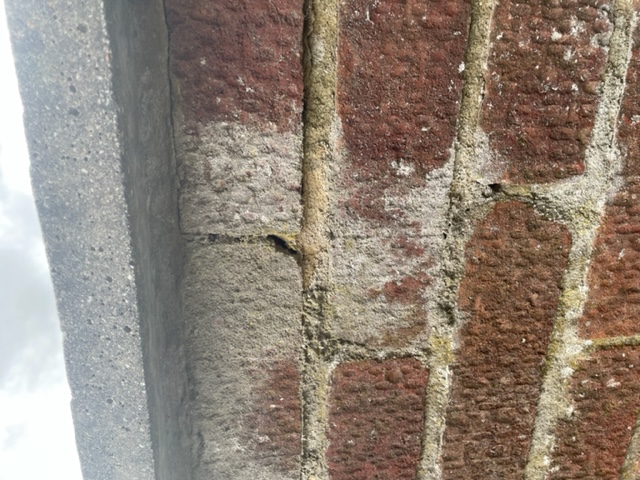
Lime Leaching under concrete copings
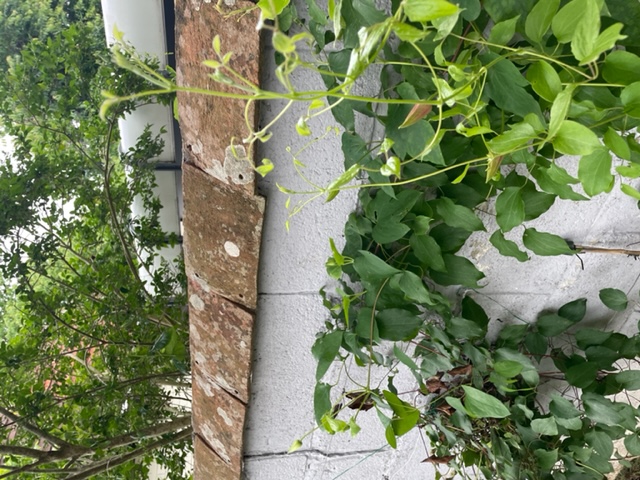
Block wall with simple non-porous clay tile copings.
Due to the high levels of moisture present in and around all water features, lime leaching is quite common. The most common case is when pool coping have been bedded on mortar, or when specific features within the water feature have been fixed with cement based products.
A good example of this is shown in the below photo's, this was a water blade fitted on top of a fibreglass lined pond using sand and cement mortar, as you can see when the pond is running water will cascade over the slate blade down into the second catchment pond. When the water is running, a large amount is also allowed to penetrate the mortar bedding material causing the leaching process, leaving extensive calcium deposits on the face of the water feature.
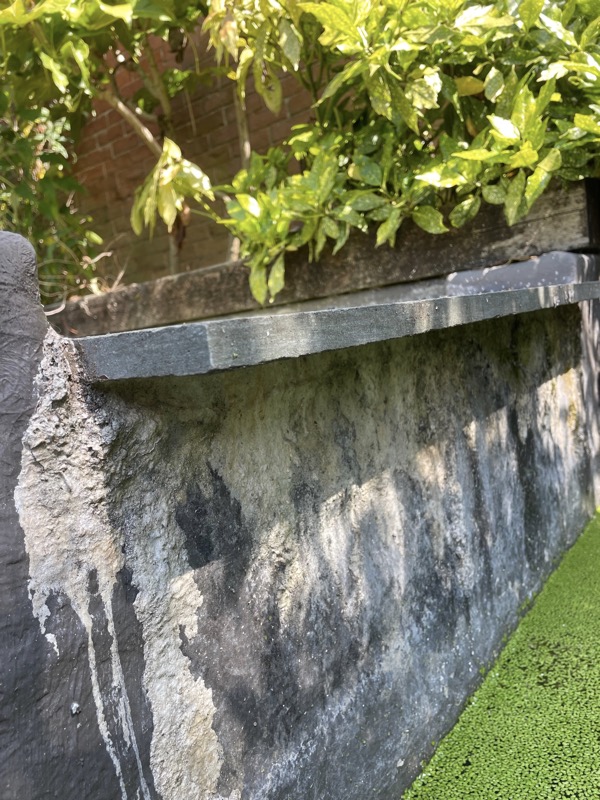
The best solution is to use alternative bedding material such as a silicon based product, or alternatively ensure that you seal behind and all the way up to the top of the water blade with a proprietary neutralising and waterproofing sealant to prevent any lime leaching.
Most cleaning products that are able to deal with this staining are Hydrocholric Acid based so you must be very careful to follow all health and safety guidance and follow directs of use very carefully. Particular care must also be taken if you are working close to natural stone products as acid based cleaners can cause permanent, irreparable, damage to the colour and structure of the stone. We would strongly recommend testing any of these products on a small discreet area first to ensure you are happy with the results, before commencing work on any large areas.
In most cases the durability and structure of the installation are not affected by Lime Leaching, it is only the detrimental affect to the aesthetics that may be the problem. If the cause of the leaching is one that will continue ,you must undertake some remedial work to rectify the problem and stop the water ingress, then the marks can be cleaned and hopefully this should provide a long term solution.
NATURAL STONE AND TIMBER LTD WILL NOT TAKE ANY RESPONSIBILITY FOR PROBLEMS CAUSED IF PRODUCTS ARE INSTALLED OR TREATED INCORRECTLY.
See our locations